|

 Up
Up 
 Personal
Personal
Recollections
of the Wrights 
(You are here.)



  Need
to Need
to
find your
bearings?
Try
these
navigation aids:
If
this is your first
visit, please stop by:
Something
to share?
Please:



|
|
Eyewitness Report
This article appeared in the Aero Club of America News, June
1912 edition, just after Wilbur Wright had died of typhoid in Dayton,
Ohio. It was written by Professor William Werthner, a
teacher at Steele High School.
 n
the Dayton high school classes of the late 1880s I had a quiet, reserved
boy, faithful in his work, but not strikingly different from the rest,
named Orville Wright, whom I should have forgotten among the hundreds of
yearly newcomers had not his sister Kate in after years also attended our
school and told me that she was the second of her family to recite in my
classes. n
the Dayton high school classes of the late 1880s I had a quiet, reserved
boy, faithful in his work, but not strikingly different from the rest,
named Orville Wright, whom I should have forgotten among the hundreds of
yearly newcomers had not his sister Kate in after years also attended our
school and told me that she was the second of her family to recite in my
classes.
Some six or eight wars afterward, as college graduate, she made
application for a vacancy in the high school faculty and received the
appointment; this was followed by a renewal of acquaintance, and from time
to time Miss Kate told me of Orville's doings and of his studies (together
with his older brother Wilbur) in the art of human flight.
I took but slight interest in the matter until one day she showed me
some photographs "the boys" had sent her from North Carolina,
where on the sand dunes, near a place whose queer name has since become a
household word, Kitty Hawk, they were experimenting with gliders. For
several seasons these practical studies were made by the brothers at Kitty
Hawk, and no one, save a few friends, knew or cared anything about the
matter.
Occasionally the sister asked me for a bit of help in translating
difficult or obscure passages for her brothers in current German
aeronautical publications, especially several by Lilienthal, whose
spectacular death had so startled us.
In turn, I learned that the brothers did not at all agree with some of
the deductions of this German investigator, and I shook my head rather
dubiously at the thought that a couple of apparently untrained American
youths should deny the doctrines of a German scientist -
but they maintained that they were right, and proceeded to make
practical application of their own theories.
I grew interested in their schemes, and when they invited me to come to
see their experiments in flying, I was more than eager to learn how they
would overcome gravity and solve the problem of the ages. That they could
glide downhill like Lilienthal I knew from Miss Kate's accounts and from
the photographs which the one of them had taken while the other was in the
air - but to put a motor in the biplane, and
thus make it fly just above the level ground, or turn a corner or rise and
fall and balance itself in the uncertain wind -
this was another matter entirely, and remained to be proved to the world
of doubting Thomases. Knowing the brothers' faith in their invention,
remembering the years of patient study and their recent glidings at Kitty
Hawk, I tried to make myself feel that I should see the apparatus fly; but
I still lacked faith of the real kind, and the stories of Daedalus and of
Darius Green flitted through my mind as I first accompanied Miss Kate to
the fateful Huffman's Prairie, some six miles east of the city, where the
Wrights had put up a substantial shed to house their great white bird,
their tools and supplies, and where they often spent the whole day when a
knotty mechanical problem arose, scarcely allowing themselves the short
time to eat a cold lunch taken along from home.
Here, too, when there was any promise of flight, was always present the
venerable, gray-haired Bishop, encouraging his boys by interest in their
work and implicit faith in the outcome, and none was more heartily
congratulated than he when finally crowning success was theirs.
As the inventors were still experimenters, and not demonstrators, their
flights were not advertised, and strangers were never welcome; in fact
sometimes Wilbur posted me at the roadway with positive instructions to
see that no one entered the field with a camera, and to look closely that
it was not hidden under a coat or in the pocket; for they were not
willing to have the unripe results of their studies and experiments
published especially through another's camera.
At times I was more than mere onlooker; I helped relay the rail, if the
wind had shifted, for at this early stage the biplane was always started
into the face of the wind supported by a one-wheeled truck on a rail; at
other times I helped balance the machine on its truck, while Taylor, their
mechanician, and their brother Lorin started the propellers, and the
inventor on the field stood by to critically watch how things went.
There was nothing spectacular about these many trials, but the good
humor of Wilbur, after a spill out of the machine, or a break somewhere,
or a stubborn motor; was always reassuring; their patient perseverance,
their calm faith in ultimate success, their mutual consideration of each
other, might have been considered phenomenal in any but men who were well
born and well reared. These flights, or spurts at flying, they always made
in turn; and after every trial the two inventors, quite apart, held long
and confidential consultation, with always some new gain; they were
getting nearer and nearer the moment when a sustained flight would be
made, for a machine that could maintain itself aloft two minutes might
just as well stay there an hour, if everything were as was intended.
And so it did, one day; the few spectators were beside themselves as
the great white bird, with Orville lying on the lower plane, lifted itself
into the air, gave no indication of dropping, and just kept on, round and
round, over the field which, in the light of this phenomenal achievement
of seven years ago, with propriety might now be called the "Aviators'
Field of the Cloth of Gold." The spectators, I say, trembled with
excitement; but Wilbur, self-controlled by virtue of his faith in the
correct theories he and Orville had worked out, looked calmly on; he saw
it all happen as he knew from the first it had to happen. And on this prairie stretch, historic since
those flights of 1905, the local memorial committee proposes the erection
of two Greek columns to commemorate the first flight of a heavier-than-air
machine. Mr. Torrence Huffman will donate several acres of land, and funds
are forthcoming to finance the carrying out of the unique scheme in the
near future.
Nothing seems more appropriate than the placing of twin shafts on this
field of triumph, marking the labors of two men so closely bound in one
achievement, all these years supplementing each other more perfectly than
any two coworkers known in history, of whose work no one can say:
"Here is the mark of Wilbur's hand and here of Orville's." To
speak of one is to include the other, for only when separated by the sea,
Wilbur abroad and Orville at home, could one think of them as even bodily
apart. Now their labors together are over, for Wilbur's fertile brain and
busy hands are still as he lies "under the sod and the dew,"
close by the gentle woman who gave him to the world.
|
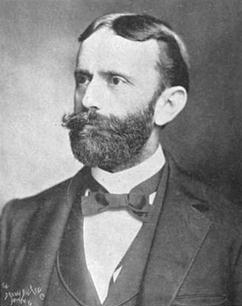
In addition to teaching at Steele High School, Wlliam B. Werthner was
also an acclaimed botanist and author.
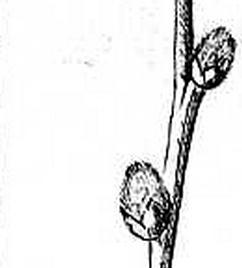
Orville made this sketch of a pussy willow for Werthner's class in 1887.
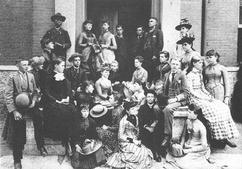
Orville's high school class picture from 1890.
Orville is just inside the doorway.
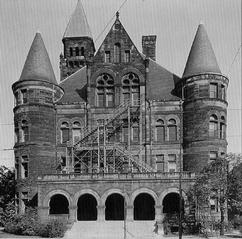
Steele High School, where Katharine Wright and
William Werthner taught.
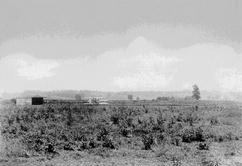
The Flyer and the Wrights' shed at Huffman Prairie
in 1904.
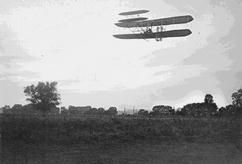
The 1905 Wright Flyer 3 over Huffman Prairie on
September 29. Orville made 14 rounds of the field and for the second time,
ran the gas tank dry before he was forced to land. The first time had been
just 3 days previous when Wilbur flew 16 rounds before running out of gas.
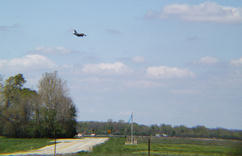
Huffman Prairie today, with an Air Force jet landing
in the distance. The twin columns were never erected.
|